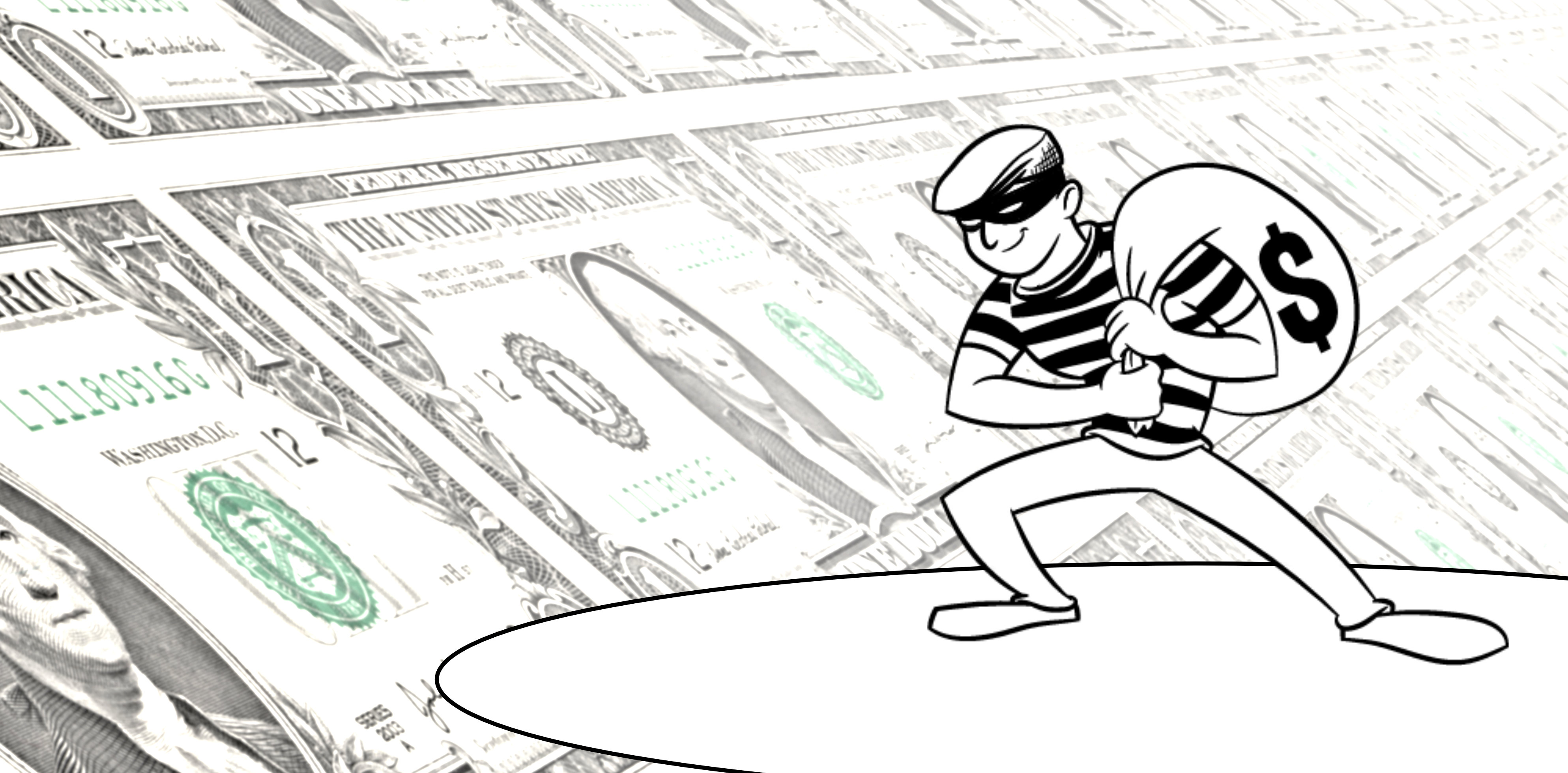
by John | Mar 12, 2017 | Currencies, Geopolitical Risk Protection, The Inflation Bandit, Travel, Wealth Protection
I recently got back from a Caribbean cruise I took with my family. It was a wonderful time of relaxation, adventure and reconnecting.
But since I’m often thinking about economics and finance it was also a proxy for the global economy.
The first stop of the cruise was Roatan, an Island in Honduras. We drove from the port (pictured below) to the other side of the Island to go snorkeling.

Roatán Island, Honduras
Driving around the Island I saw mostly what I would have described as lower income areas if I’d been back in the United States.
I’ve certainly seen worse neighborhoods in the US.
I still got LTE mobile phone coverage with data (made a few stock trades), we drove by pharmacies, gas stations, supermarkets, a bank with rifle toting guards outside and a modern looking power plant.
One of the houses we drove by had some chickens in the front yard which at first seemed quite rustic until I remember I’ve seen that same thing an hour south of Columbus, Ohio.
The people I encountered were very friendly. I didn’t know what to expect but it was fascinating to spend time in another country.
Spending US Dollars outside the United States

My sister and I at Roatan. The Hawaiian shirt shows my commitment to leisure.
I bought a Hawaiian shirt for 22 US dollars (USD) as well as a small hand carved mahogany box that cost 45 USD.
The next day the ship stopped off the coast Belize and we took a tender into the City of Belize.
From there we went on a semi-guided snorkeling tour in which we got to swim with stingrays and nurse sharks.
It was incredible.
Afterwards we stopped at an Island called Caye Caulker for lunch. I could get a burger and fries for about 10 USD (Hey! Lobster wasn’t in season!).
It was on the Island of Caye Caulker that I first saw a Belize dollar. We paid for lunch in cash and the waitress gave us change in a mix of Belize dollars and USD. All the other transactions both on Roatan in Honduras and Belize up to that point were solely in USD.

This restaurant on Caye Caulker, Belize accepted dollars
It was the same in Cozumel, Mexico. The vendors priced items in dollars. One hotel we stopped at had drinks priced in pesos, but they accepted dollars without question.
US Dollars as the World Reserve Currency
Even on the relatively remote Isle of Caye Caulker the vendors on the street took US dollars as if I was in the US. And goods were priced in USD.
Welcome to the Caribbean love. – Captain Jack Sparrow
It struck me as odd that I was transacting in dollars in other countries. If someone came to the US and wanted to pay me in Belize dollars I probably wouldn’t accept them.
Part of the reason why the people of Honduras, Belize and Cozumel accepted dollars is likely because dollars still are the reserve currency of the world.
I doubt they think about world reserve currencies (I wouldn’t if I didn’t really enjoy this stuff) but the people I encountered who accepted dollars know that dollars are valued and can be used to buy useful things.
A Microcosm of the Global Economy
On the ship itself the vast majority of crew members are not from the United States. Amongst the crew there are around fifty home countries, such as Mauritius, Hungary, Ukraine, India, Romania, France, United Kingdom, Canada, Nicaragua, Philippines and dozens more.
I did find a couple US crew members as well as one from Canada, and the UK. But the majority of the home countries in my informal assessment of the crew were Philippines, India and Mauritius.
The passengers, while not wearing name tags with their nationality listed on it, seem to be mostly from the United States.
I think this trip represents a microcosm of the global economy.
The US dollar is strong, it’s accepted by other countries, and people from the US participate in a lot of consumption and spending of US dollars. People from other countries work to provide goods and services for the Americans and accept these dollars.

My brother and I outside of El Cid La Ceiba in Cozumel, Mexico.
This is a great deal for the Americans.
But the fundamentals of the US dollar are not strong.
Even when it isn’t bullying foreign banks the US government has made no serious effort to balance the budget, reign in entitlement spending or reduce the debt. A few quarter point hikes notwithstanding the Federal Reserve has not seriously attempted to reduce it’s balance sheet or normalize interest rates.
These factors are not positive for the US dollar as evidenced by it losing over 90% of it’s value.
It made a lot of sense why everyone wanted dollars 50-60 years ago. It makes less and less sense as time goes on.
As Simon Black likes to say this isn’t a consequence free environment. More to follow on this topic in the next article.

by John | Jul 17, 2016 | Preservation of Purchasing Power, The Inflation Bandit
If a frog is placed in boiling water, it will jump out, but if it is placed in cold water that is slowly heated, it will not perceive the danger and will be cooked to death.
– Motto of the Inflation Bandit
There is a thief called the Inflation Bandit. He steals YOUR money every year. The ‘Bandit has been robbing and plundering since 1913. He has never been caught and he has never been stopped.
The Inflation Bandit Stole Half Your Money Since 2000
He is a terrible scoundrel and has robbed Americans of millions and billions of dollars but he’s also clever in an evil sort of way.
He doesn’t break into banks and steal money directly–after all that would be dangerous and he’d be caught.
How the Inflation Bandit Operates

The dastardly Inflation Bandit just prints up new money that looks exactly like all the other real money and spends it.
By spending his fake money into the economy he causes prices to go up for everyone else.
So while he doesn’t take your money directly he accomplishes the same thing by stealing the purchasing power of your money.
One of the Million ways this Master Thief has stolen from you
If the Inflation Bandit finds a car he wants he prints up fake money and uses it to buy one for himself and maybe even a few for his friends.
He buys up enough cars so that there aren’t enough left on the lot for all the people with real money to buy one.
When buyers can’t get what they want they tend to get upset. They complain to the car dealer. “I want to buy one of those awesome new cars but you’re sold out! Get some more ordered from the manufacturer!”
So when the car dealer orders more cars from the manufacturer, the dealer thinks, “Hey, people really love these cars! I bet I can raise my prices when I get more. That way people who most want the cars will be able to get one and I’ll make more money.”
Plus the dealer doesn’t like it when his customer’s come in and complain because he doesn’t have cars available for them to buy.
So now the price is higher for people who still want to buy a car. Because the Inflation Bandit used his fake money to buy cars he effectively stole from people who now have to pay the higher price for a car.
Don’t blame Business
It’s really not the car dealer’s fault he sold the cars to a thief. He didn’t recognize the Inflation Bandit. The ‘Bandit wears many disguises and his fake money is indistinguishable from real money.
The Inflation Bandit doesn’t just buy cars, he buys eggs, milk, gasoline, houses, movie tickets, iPhones, computers, cable TV subscriptions. He buys everything with his fake money.
And it isn’t like once the Inflation Bandit spends his fake money it is gone. That fake money is now mixed into the economy and bids up the prices of everything else.
The Inflation Bandit gets slowed down
Back in the late 70s the Inflation Bandit got especially greedy and printed up a lot of fake money. This was causing prices to go up by over 15% per year!
The ‘Bandit got away with it for a few years but people were outraged.
The government cracked down on his efforts and by the mid 80s he was on the run and printed less of his fake money so prices rose by about 5% per year.
Not a bad take for this master thief. He was still stealing millions upon billions but people were less concerned when prices rose by 5%. After all they had been accustomed to prices rising by 15%.
The ‘Bandit learned his lesson
The Inflation Bandit knows if he prints too much fake money people will be outraged. People will demand he be stopped or at least slowed down.
So he’s gotten smarter and he’s gotten patient. He knows that as long as he doesn’t create too much of his fake money each year most people won’t notice it and people won’t be motivated to stop him.
The Inflation Bandit also knows that if people do notice the rising prices they’ll likely blame greedy businesses.
He has a good chuckle every time a business gets blamed for his crimes.
Have you heard of Price Inflation?
While the Inflation Bandit might not be a real person. Price Inflation is as real as it gets. Price Inflation is caused by fake money being spent into the economy.
Price inflation means things cost more and your money can’t buy as much. For example, in 2000, a dozen eggs cost $.96. In 2015 a dozen eggs cost $2.75. That is over a 186% increase in price over 15 years.
Source: http://www.statista.com/statistics/236852/retail-price-of-eggs-in-the-united-states/
In the egg example that is a 7% average annual inflation rate.
Since the year 2000 I believe price inflation causes your money to be worth 5% less per year on average. This means when you try to buy things from food to gas and yes even electronics like iPhones and computers you’re paying 5% more each year than you otherwise would have.
Source: http://www.shadowstats.com/alternate_data/inflation-charts
Another Way to Understand Price Inflation
Lets say you lost a $100 bill in your couch on New Year’s Eve in 1999 and you found it on Christmas of 2015.
With an average inflation rate of 5% that $100 bill in 2015 now has the purchasing power of about $46 in 2000.
You would be able to buy less than half as much stuff! That means you’ve lost over half your purchasing power!
Don’t get Slowly Boiled Alive!
Imagine if you woke up one morning and someone had stolen half of your money. If you’re like me you’d be outraged. You’d call the police and demand justice.
But because inflation causes money to lose value relatively slowly over time it’s harder to notice.
People have had half their dollar’s value stolen over the past fifteen years and few people complain about it.
Like the proverbial frog in water, if the water is heated slowly enough, it will not jump out and be boiled alive.
Most people don’t think much about inflation and they don’t care. But if you buy things using dollars you’re being robbed blind by the Inflation Bandit.
There are ways to protect yourself from inflation thievery but you first have to realize you’re being boiled.
If you’d like to hear about the ways I put the beatdown on the Inflation Bandit click here.







